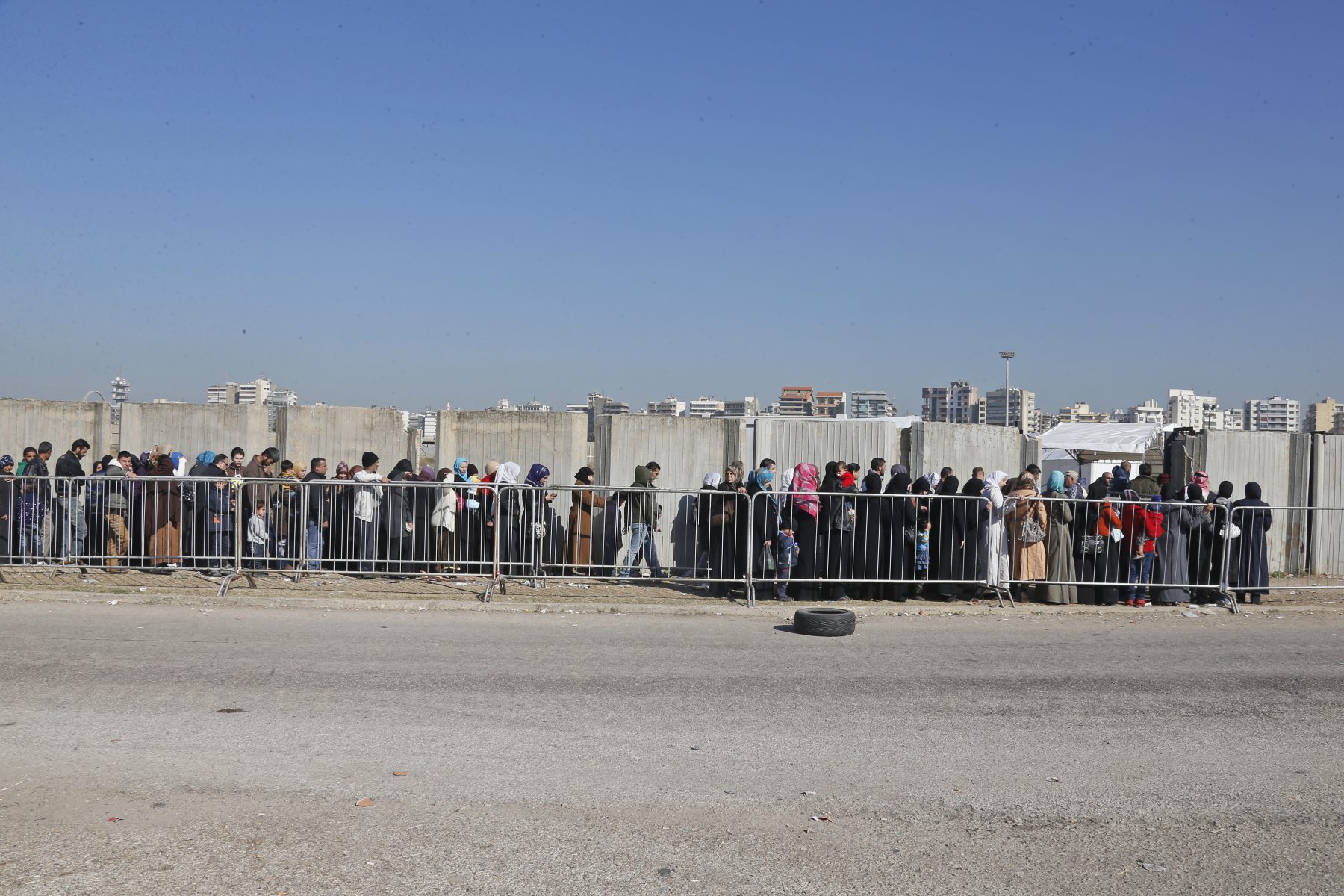Interview conducted by Agnese Glauda
Natural hazards cause victims and a large amount of economic and environmental damage every year. The number of people involved and the costs are expected to rise due to climate change, which will impact the frequency and severity of extreme natural phenomena. Considering that extreme events will increase, but efficient risk management has proven successful in reducing their victims, there is ground to develop innovation and prevent damages. Improvements in the field of disaster risk management reduced the number of direct victims for each disaster by a third in the last 50 years, according to the World Meteorological Organization.
A central aspect to disaster risk management is information management. In the event of a natural hazard, information is one of the most important resources. Receiving information regarding the entity of the damages and the human lives involved is as crucial as providing information on how to behave to coordinate the population response. Managing disaster communication is challenging, especially because of the high level of inherent uncertainty in these situations. Often emergency professionals have to act in the absence of validated geospatial data regarding the people involved and the level of the damage.
“Accurate, timely, and reliable information is essential for effective decision-making, resource allocation, and communication, and it can help to reduce the impacts of disasters and improve recovery efforts,” Chiara Menchise, Programme Management Officer for Risk Knowledge and Analysis at the United Nations Office for Disaster Risk Reduction for Europe and Central Asia, tells us about the latest advances in the field of disaster information management.
What is the difference between disaster risk management and disaster risk reduction?
Disaster risk reduction and disaster risk management are related but distinct concepts. Disaster risk reduction refers to the ensemble of policies and strategies aimed at preventing new disasters, reducing existing disaster risk, and managing residual risk to strengthen resilience and achieve sustainable development. On the other hand, disaster risk management is the application of disaster risk reduction policies and strategies. It involves specific goals and objectives for reducing disaster risks together with related actions to accomplish these objectives. Disaster risk management plans are guided by the Sendai Framework for Disaster Risk Reduction 2015-2030 and need to be coordinated within relevant development plans, resource allocations, and program activities.
The disaster management cycle includes four different main phases: mitigation, preparedness, responses, and recovery. The first two phases are centered around the prevention of damages and awareness of the different stakeholders, such as the population and the emergency workers. The latter two are focused on immediate relief and long-term recovery. What is the role of information in each phase?
Information plays a crucial role in each phase of the disaster management cycle. In the mitigation phase, information is used to identify and assess the risks associated with potential disasters. This includes gathering data on hazards, vulnerabilities, and exposures, as well as conducting risk assessments and developing risk reduction plans. The information collected is used to inform decision-making and prioritize actions aimed at reducing disaster risks.
In the preparedness phase, information is used to develop plans, protocols, and procedures for responding to disasters. This includes developing emergency response plans, establishing communication systems, and conducting training and exercises to prepare responders and communities for potential disasters. Information is also used to raise public awareness and promote community preparedness.
In the response phase, information is used to coordinate and manage the response efforts. This includes gathering situational information to assess the scope and severity of the disaster, identifying critical infrastructure and services, and communicating with the public and other stakeholders. In this context, real-time information is critical for making informed decisions and deploying resources effectively.
Lastly, in the recovery phase, information is used to assess the damage and needs of affected communities, identify and prioritize recovery actions, and monitor progress. This includes collecting data on damages and losses, conducting needs assessments, and coordinating recovery efforts with various stakeholders. Information is also used to identify opportunities for building back better and increasing resilience to future disasters.
What constitutes a solid information system in an emergency scenario? What is the role of timing?
In order to ensure that decision-makers have access to accurate and timely information, the information system should be reliable, accessible, scalable and interoperable. Reliability entails accurate data to enable informed decision-making. Furthermore, information must be easily accessible to all relevant stakeholders, including emergency responders, government officials, and the public.
Scalability is also important, as the system must be able to handle large volumes of data and users during emergencies. Moreover, the information system must be able to integrate and exchange data with other systems used by emergency responders and government agencies. Security measures must be in place to protect sensitive information and prevent unauthorized access.
Also, in emergency settings, timing is critical. Information must be provided in a timely manner to be useful for decision-making and response efforts. Delays in accessing or providing information can lead to delays in response, which can have serious consequences for the affected communities. Therefore, the information system must be designed to provide real-time or near real-time data and alerts to decision-makers and the community.
Can you give us a practical example of how accurate and timely information is crucial in a prevention and emergency scenario?
Let’s take a fictional example: imagine a region prone to flash floods where local authorities have installed early warning systems that use real-time data from rain gauges and river sensors to alert communities to potential floods. Now, let’s assume that in a recent flooding event, the early warning system failed to provide timely and accurate information, and as a result, many people were caught off guard and suffered damages or even loss of life.
In response, the local authorities decided to improve the early warning system by integrating new data sources and improving the communication channels to ensure that alerts were received by all relevant stakeholders, also by implementing a community outreach program to educate people on how to respond to flood warnings and prepare their homes and families for such an emergency.
We can now expect that if heavy rains occur again in the region, this would trigger the early warning systems, which, thanks to the improvements made, should be able to provide accurate and timely information to the authorities and the community, allowing them to take appropriate action to mitigate the impacts of the flooding.
This example illustrates how accurate and timely information is crucial in both prevention and emergency scenarios, and how improvements to information systems can help to reduce the risks and impacts of disasters.
Having a solid information system in place in case of an emergency entails including diverse information sources. What are the main sources of information for disaster risk management?
Among the various sources of information for disaster risk management there are definitely, the UNDRR Sendai Framework Monitor and the disaster loss database DesInventar Sendai. These are two tools UNDRR makes available for hazard and disaster risks trends and analysis; usually, hazard and risk assessments provide valuable information on the likelihood and potential impacts of natural or man-made hazards in a given area. This information can be used to develop risk-reduction strategies and inform land-use planning and infrastructure development.
Fundamental are also satellite imagery and remote sensing technologies, which can provide detailed information on the extent and severity of disasters, as well as the condition of critical infrastructure and other assets. Meteorological and hydrological data can be used to develop early warning systems and inform preparedness and response efforts. Social and economic data (on vulnerable populations, economic conditions etc.) can help decision-makers identify areas of need and allocate resources accordingly. Lastly, citizen science and crowdsourcing technologies can be used to supplement official data sources and provide real-time updates on the situation on the ground.
Social media can also be an important source of disaster information as well as a platform for multidirectional dialogue. What is their potential for disaster risk reduction and management?
Social media has great potential for disaster risk reduction and management due to its ability to provide real-time and diverse information; often, social media is used to disseminate early warning messages to the public, particularly in areas where traditional warning systems may not be available or effective (the most used platforms are Twitter, Telegram, Facebook, and WhatsApp, which provide information during the immediate aftermath of a disaster or evacuation orders, safety tips). Social media is often used for updates on the situation on the ground, and locations of shelters, and is of great help to government agencies, emergency responders, and the public, allowing for a more comprehensive and timely understanding of the situation. Also, social media can facilitate coordination and collaboration between different stakeholders involved in disaster response, including government agencies, NGOs, and the public.
However, it is worth noting that social media also has its limitations, such as the potential for misinformation, as well as the need for internet access and digital literacy skills. In any case, social media should be used in conjunction with other information sources and traditional communication channels to ensure that accurate and timely information is shared and the needs of all communities are addressed.
Is there a real-life example of how social media has been contributing to disaster information management?
Twitter has been widely used as a platform for disaster information management and has proven to be a valuable tool for sharing information during and after disasters.
For instance, during Hurricane Harvey in 2017, Twitter was used extensively by authorities, emergency responders, and the public to share information and coordinate response efforts. The Houston Police Department used Twitter to provide real-time updates on road closures, evacuation orders, and rescue operations. The National Weather Service used Twitter to provide updates on the storm’s path and intensity, as well as warnings for flash floods and other hazards.
Meanwhile, citizens affected by the hurricane used Twitter to request help, share information about shelter availability, and coordinate volunteer efforts. People also shared photos and videos of the storm’s impact, providing valuable information for authorities and the public.
In addition, Twitter was used to organize relief efforts and coordinate donations. Celebrities and influencers used their Twitter accounts to raise awareness about the hurricane and encourage donations to relief organizations through ad hoc hashtags.
An even more recent contribution to managing disaster risk information is the use of AI to harness and aggregate data. In which practical ways can artificial intelligence be used to strengthen the information system in a prevention and emergency scenario?
Artificial intelligence (AI) has great potential to strengthen the information system in an emergency scenario by providing faster, more accurate, and more comprehensive insights into the disaster situation, for example, by analyzing historical data and identifying patterns that can help predict future disasters. AI can also be used to collect and analyze data in real time during a disaster, providing more accurate and timely information to emergency responders and decision-makers. In this context, AI algorithms can be used to analyze social media activity and identify areas of need or patterns of behaviour.
Overall, the use of AI in disaster risk management is greatly improving the speed and accuracy of information collection and dissemination. Lastly, It is crucial to guarantee ethical and transparent application of AI, while taking into account privacy and bias concerns with care.
AI can really benefit all phases of the disaster risk management cycle by providing faster, more accurate, and more comprehensive insights into the disaster situation.
What are the limitations to the use of AI for disaster information management? Can there be issues for transparency and accountability?
The first limitation that comes to my mind is related to privacy and ethics: AI algorithms may use personal information or sensitive data to make decisions, and there may be questions about who has access to this information and how it is used.
Also, the data accuracy and quality of the data used to train AI algorithms can have a significant impact on the effectiveness of AI due to incompleteness, bias, or inaccuracy of data that could lead to incorrect predictions or recommendations.
Is data availability a potential issue in using AI for disaster information management?
While there is a vast amount of data available, including data from social media, sensor networks, and satellite imagery, not all of this data may be relevant or useful for disaster management. Also, timely and accurate data is critical for AI algorithms to be able to detect changes in the disaster situation and adjust responses accordingly, and this can be challenging in some disaster scenarios, such as in areas with limited or unreliable communication networks. Overall, while data availability can be a potential issue in using AI for disaster information management, it can be mitigated through careful data curation, data sharing, and investment in data infrastructure.
What are the main future challenges for disaster information management?
First, it is important not to overlook the role of human-centered design in ensuring that AI systems are intuitive, accessible, and user-friendly (thus accessible to vulnerable populations, for example); the needs and perspectives of disaster-affected communities, diverse groups and minorities should be integrated into the system design.
Second, effective disaster information management requires seamless integration and interoperability between various systems and stakeholders, including emergency responders, government agencies, and community organizations. Achieving this level of coordination is very challenging, especially in complex disaster scenarios.
Third, the volume, velocity, and variety of data generated during disasters are expected to increase with advancements in technology, hence managing and analyzing this wealth of data to extract meaningful insights and inform decision-making will be a significant challenge.
Addressing these challenges and the many more to come will definitely require a multidisciplinary approach that integrates advances in technology with strong governance, effective communication, and a focus on community engagement and resilience.
Picture: flood in the Marche Region (Sept. 2022) – Department of Civil Protection on Flickr
Chiara Menchise is the Programme Management Officer for Risk Knowledge and Analysis at the United Nations Office for Disaster Risk Reduction for Europe and Central Asia. In this capacity she supports countries from the region in conducting disaster risk assessment and analysis, knowledge sharing and collection and analysis of disaster loss data in support policy-making purposes.






